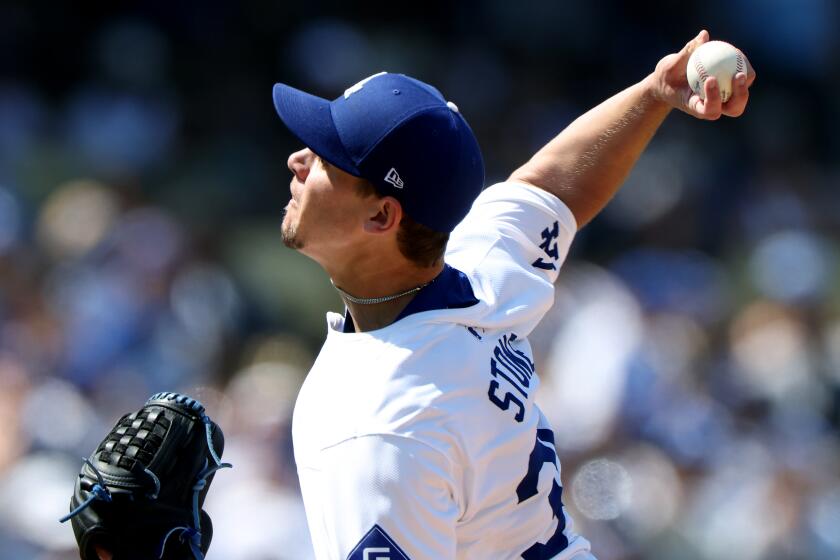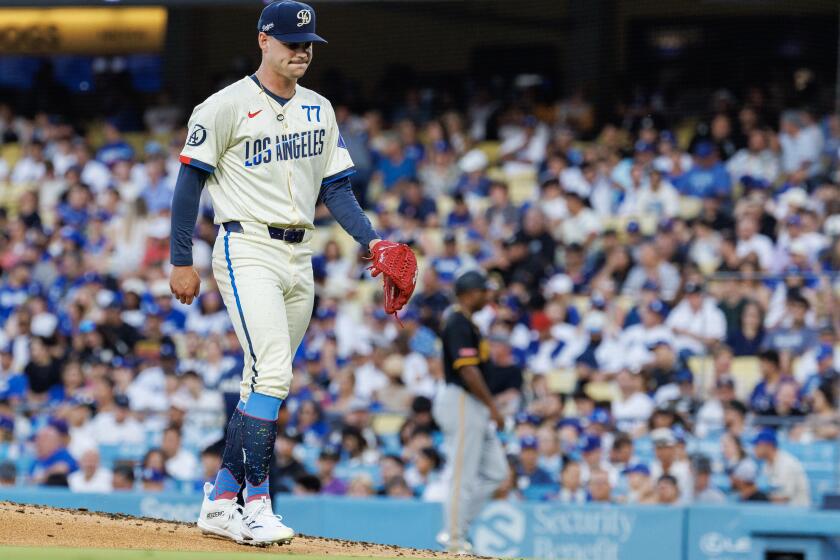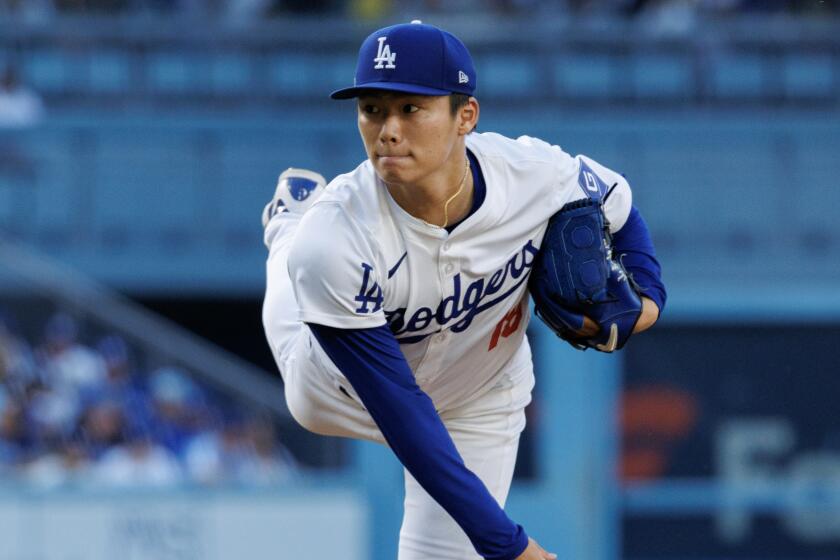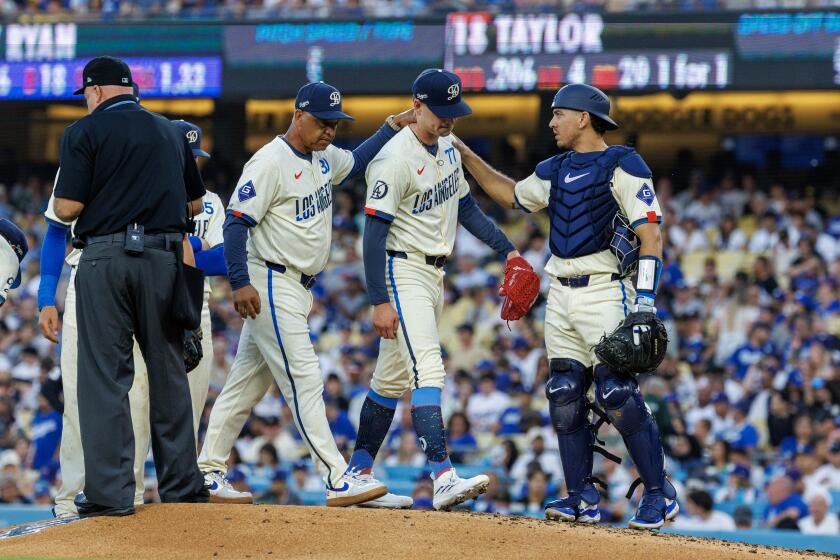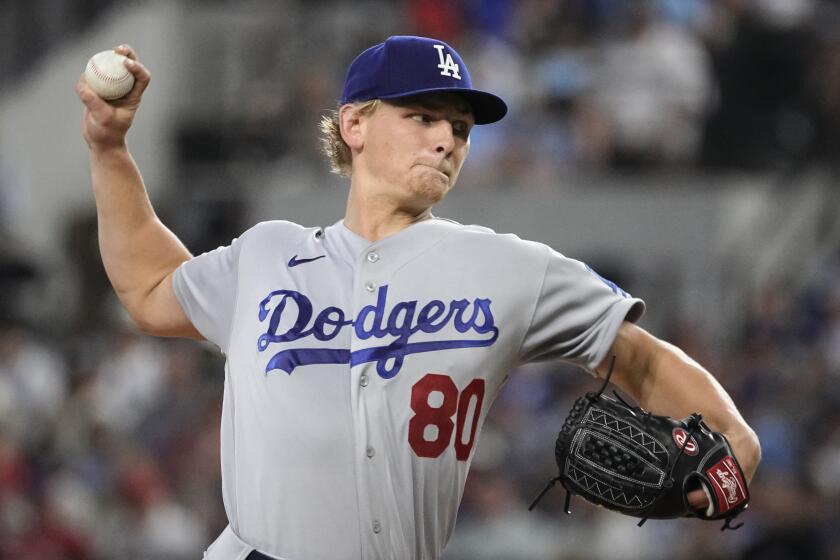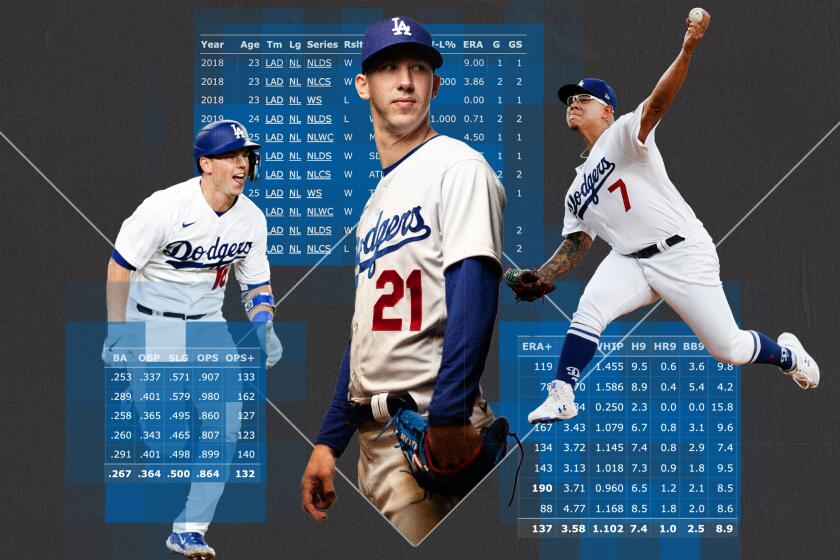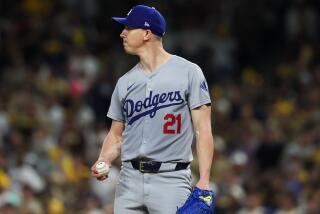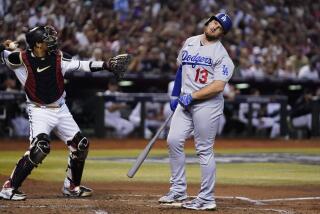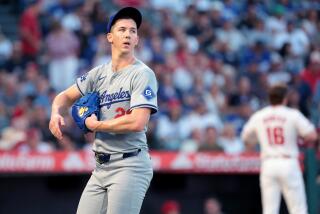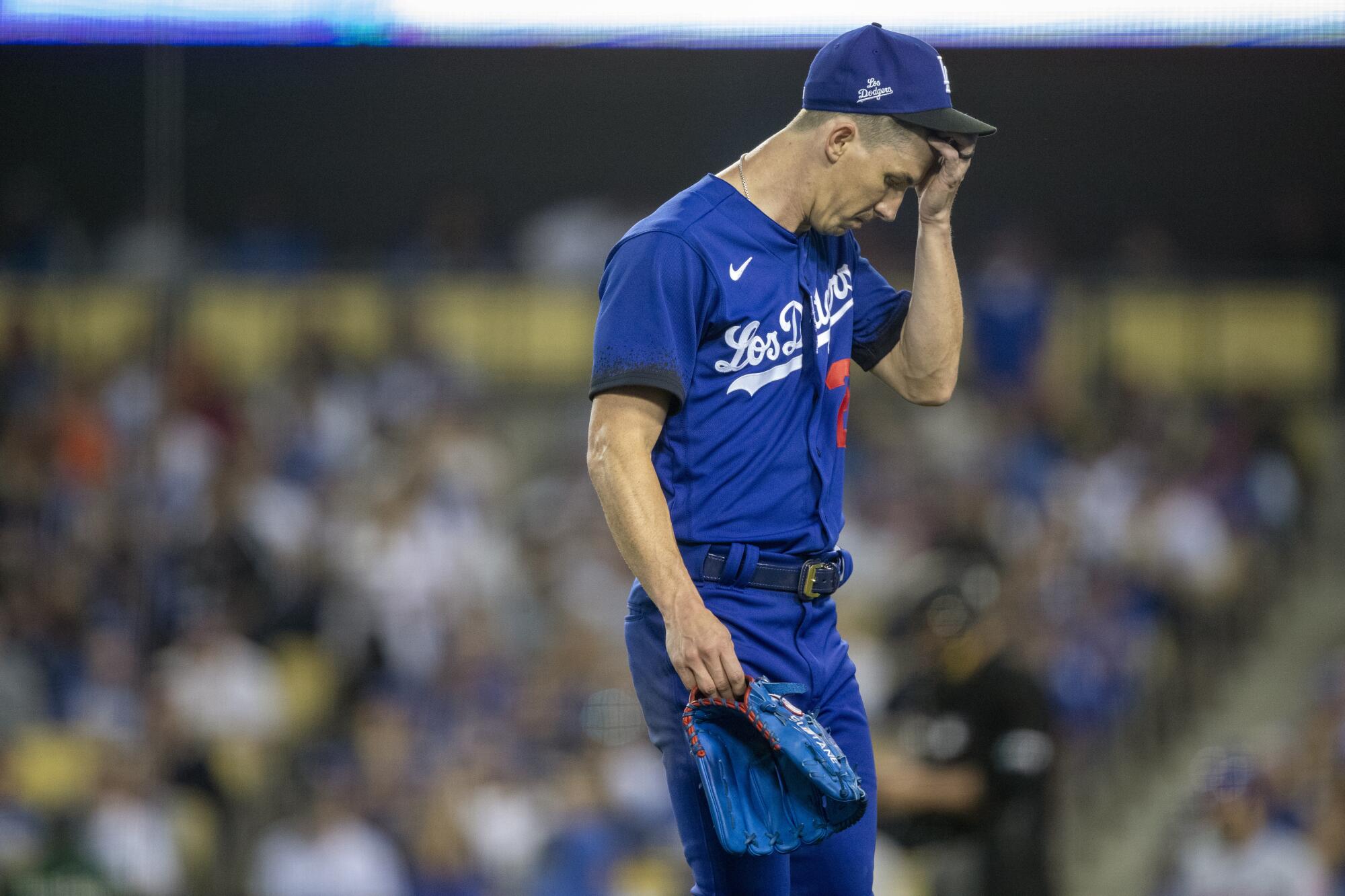
During his rise to professional stardom, Walker Buehler encountered a proverbial bridge in the pathway of his burgeoning career.
On the other side of the bridge laid a land of promise, a potential future in the big leagues and all the trappings that come with it.
Crossing the bridge, however, also required a risk; forcing Buehler to push his body to its limits to avoid the abyss of irrelevancy below.
For a wiry 6-foot-2 right-hander who was never the hardest thrower growing up, and who came of age in baseball’s modern data-driven era of pitching development, that meant doing what so many others have in pursuit of their MLB dreams.
Adding life to his fastball to catch the attention of scouts. Embracing non-traditional training methods initially popularized by private pitching labs (like Driveline Baseball and its curated velocity programs) and later adopted by pro and college teams (including both the Dodgers and his alma mater, Vanderbilt).
Amid questions about how much Tyler Glasnow and Walker Buehler will contribute for the Dodgers in October, Gavin Stone shines again in 3-1 win over Rays.
Most of all, it meant adopting a max-effort, high-velo pitching style that was, as he put it, “predicated on my ability to let every ball go hard.”
Rather than just make the most of his natural gifts on the mound, Buehler transformed his physical capabilities in a way past generations of pitchers simply couldn’t.
“There’s risks that come with that,” Buehler acknowledged this spring. “But had I not done that, who knows if I get to the big leagues? Or would be any good in the big leagues? There’s some cost-benefit to it.”
Indeed, like a growing number of pitchers in the Dodgers organization and around baseball, Buehler experienced each — blossoming as a World Series champion and two-time All-Star, but also suffering two Tommy John surgeries that, at age 30, have diminished his current performance and forced him through a tedious comeback process the past couple years.
He crossed the bridge. But it came with a price.
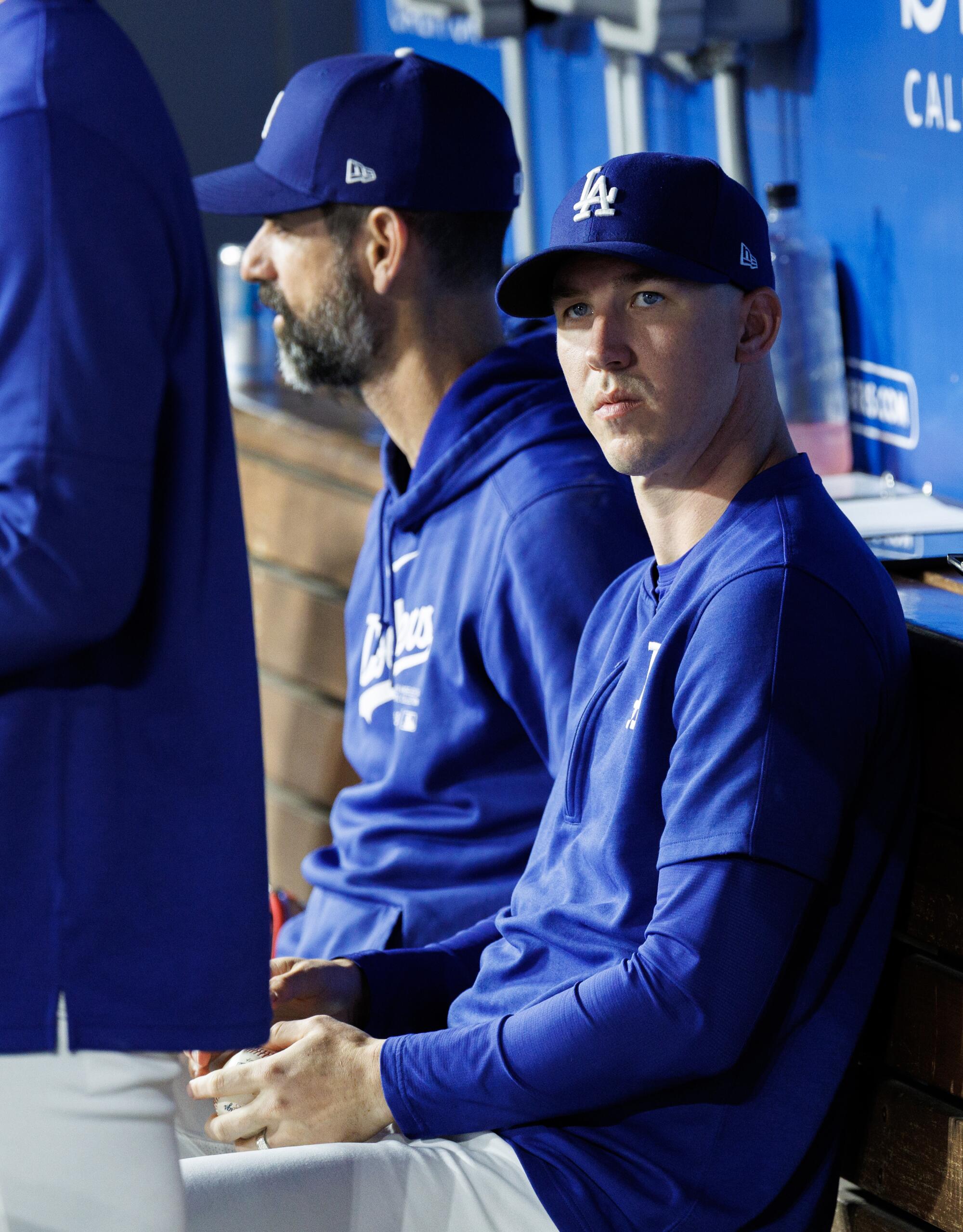
“I think if you would have asked me five years ago, ‘You’re gonna have surgery … whenever, but here’s what your career is gonna look like until then,’ then yeah, that’s fine,” Buehler said. “That’s what we do.”
Stories like Buehler’s are commonplace in baseball’s current moment, epitomizing the difficult dynamic at the heart of MLB’s growing pitching injury epidemic:
Thanks to advancements in data, technology and the cutting-edge training programs they have borne — from weighted-ball throwing programs to biomechanically-engineered deliveries — the ability to cultivate high-end “stuff” has never been better.
But, as velocity has climbed, so too have pitcher injuries.
“It’s been a self-fulfilling prophecy,” said Dr. Glenn Fleisig, the director of biomechanics research at the American Sports Medicine Institute and an injury research advisor for MLB. “Put all the emphasis on velocity, and you end up with a bunch of hard throwers who are blowing out.”
The epicenter of the crisis might be in Los Angeles, where the Dodgers have had the majors’ most injury-prone pitching staff in the last four years:
- Since 2021, the Dodgers have had 98 injured-list stints for pitchers — the most in MLB (not including COVID-related IL stints).
- They’ve had seven big-league pitchers undergo some version of Tommy John surgery, according to a database compiled by researcher Jon Roegele (only the Angels have had more UCL-related procedures, including Shohei Ohtani last season, in the last four years).
- They’ve particularly struggled to keep starters healthy, having had only five pitchers make at least 25 starts over the last four seasons combined (the second-fewest in MLB in that time).
- They’ve lost a litany of top prospects to long-term injuries, with six homegrown players currently on the shelf because of either major elbow or shoulder surgery.
The club has faced even more external scrutiny from a fan base weary of watching short-handed pitching staffs collapse in October, a contributing factor in three consecutive early postseason eliminations since their 2020 World Series title.
River Ryan, 25, had a 1.33 ERA and 18 strikeouts in 20⅓ innings of four major league starts this season before getting injured Saturday against the Pirates.
“I think it’s fair,” one rival evaluator said, “to question their pitching injuries.”
The trend has also raised alarms within the Dodgers organization, with president of baseball operations Andrew Friedman and general manager Brandon Gomes both saying in the last month that — amid another wave of losses that culminated with Gavin Stone’s shoulder injury during the weekend — club officials would be “looking into” a problem that has seemingly transcended simple health luck.
“It’s been a really challenging year on that front,” Friedman said Friday. “[It’s] something that we’re going to need to spend a lot of time on this winter to really dig in on.”
To people in the organization, and medical experts around the baseball industry, there are myriad factors potentially at play — ones the Dodgers have argued are not “all that unique” to the team, as Gomes put it, at a time when pitcher injuries are up across the sport.
There are still lingering effects from the COVID-19 pandemic, and the long-term disruption it caused in pitchers’ workloads. There are up-for-debate impacts of MLB’s implementation of the pitch clock, as well as a crackdown on sticky substances that had aided the boom of stuff in the last decade. There are also concerns that the high-pressure, cutthroat culture of youth baseball is predisposing pitchers to more injuries in their professional careers.
Nonetheless, the most obvious culprits — for baseball at large, and seemingly the Dodgers, as well — are the rapid escalations in pitching velocity and overall stuff.
“The faster you throw, the higher the spin rate, you will be more successful,” said Dr. Jason Zaremski, clinical professor and chief of sports medicine in the department of physical medicine and rehabilitation at the University of Florida Health. “But, there’s an increased risk of injury.”
And, even as injuries have “skyrocketed” across all levels during the past few years, as Fleisig put it, no one has discovered a way to effectively mitigate the accompanying injury risk.
Just ask the Dodgers, who have offered only one consistent response to questions about their pitching injury woes.
“I think, unfortunately, a lot of it stems back to, we don’t really know,” Friedman said earlier this season.
“I wish I had more answers,” Gomes echoed last month. “We just don’t know.”
Of the dozens of pitchers that have landed on the Dodgers’ injured list in recent years, most fall into two separate categories.
One is easier to explain than the other.
For much of Friedman’s tenure running the team, the Dodgers have taken low-risk, potential-upside gambles on established big-league pitchers with dubious injury records.
There was Corey Knebel and Danny Duffy in 2021. Tommy Kahnle and Andrew Heaney in 2022. Noah Syndergaard and J.P. Feyereisen in 2023. And don’t forget about Jimmy Nelson, who was healthy for just four months of his four-season stint with the club from 2020-2023.
This winter, however, the Dodgers upped the ante on that approach, making three marquee pitching acquisitions — Ohtani, Tyler Glasnow and Yoshinobu Yamamoto — that were all accompanied by durability questions (Glasnow and Ohtani because of past Tommy John surgeries; Yamamoto because of his move from Japan’s less rigorous Nippon Professional Baseball league).
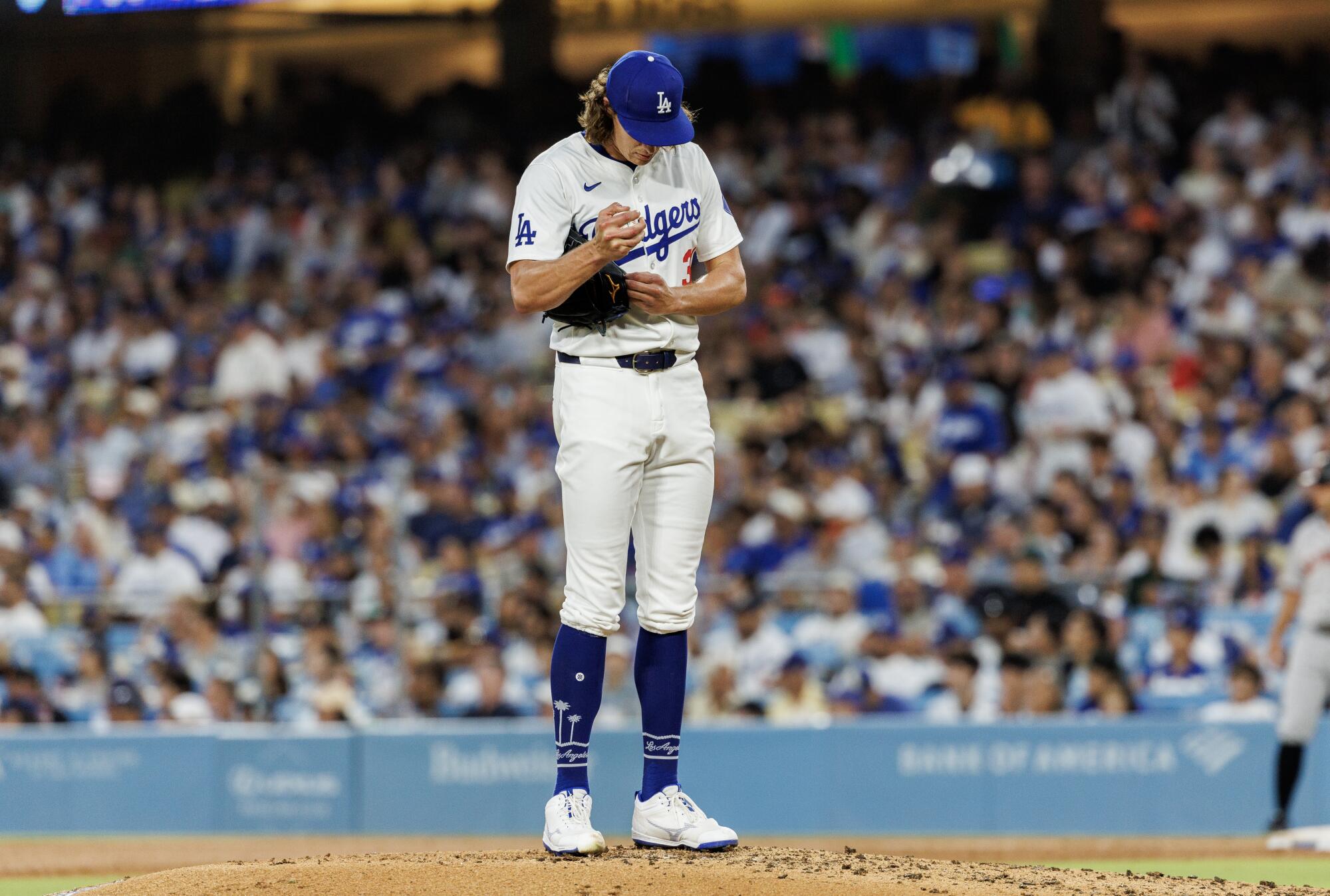
And as October fast approaches, all of them remain injury question marks.
Ohtani was never expected to pitch this year, likely to instead shut down his throwing program to focus on his hitting duties once the playoffs begin.
While Yamamoto is scheduled to return from his nearly three-month absence with a strained rotator cuff on Tuesday, he’ll have little time to regain his early-season form and re-emerge as a potential impact option in the playoffs.
Glasnow is even more of an uncertainty, having only recently resumed bullpen sessions while battling tendinitis in the same elbow he had surgically repaired in 2021.
Earlier this month, the Dodgers also lost veteran Clayton Kershaw (another pitcher who has been no stranger to the IL list in recent years) to a bone spur on his left big toe; creating another unknown in the Dodgers’ pitching plans down the stretch.
“A lot of the focus is on the star-caliber players on our roster, but we spend a lot of time on the depth of our roster as well,” Friedman said, “and appreciate that it’s going to be important throughout the year.”
Why have the Dodgers been hit so repeatedly hard by the pitching injury bug? And when — and at what cost — is the right time to pursue potentially pricey reinforcements?
This, however, is where the second strand of injuries has posed a confounding problem.
In a perfect world, the Dodgers would be able to lean on homegrown prospects from their highly touted pitching pipeline to fill such gaps and bolster their staff.
But in reality, those young arms have been susceptible to their own spate of serious injuries — ones that represent a much more troubling trend for the club and the sport.
During the past 15 years, velocity has become king in baseball, backed by an analytics boom that illustrated the benefits of even a couple of extra ticks on a fastball. This year, for example, the league-wide batting average against fastballs 95 mph or less is .261. For heaters of 95-plus mph, it’s .227.
Teams and pitchers alike have noticed. In 2008, the MLB average for four-seamers was 91.9 mph. This year, it’s 94.3 mph.
That bridge to the majors? It’s those with the best velocity who most often cross it.
“Pitchers have this mindset to throw every pitch as fast as possible, because the analytics say that’s a better chance of success,” Fleisig said. “But the medicine says, that’s a better chance of injury.”
Velocity itself doesn’t cause injuries — some pitchers have the physical build or mechanical efficiency to handle high velo, while others get hurt despite not throwing very hard.
However, the process of generating extra velocity can potentially lead pitchers to a dangerous place. Without fully knowing it, they might put too much torque on their elbow, or too much stress on their shoulder. And, as Fleisig noted, “If you’re throwing all your pitches at maximum effort, you are putting maximum load on your Tommy John ligament and other parts of your body. That, I believe, is a recipe for trouble.”
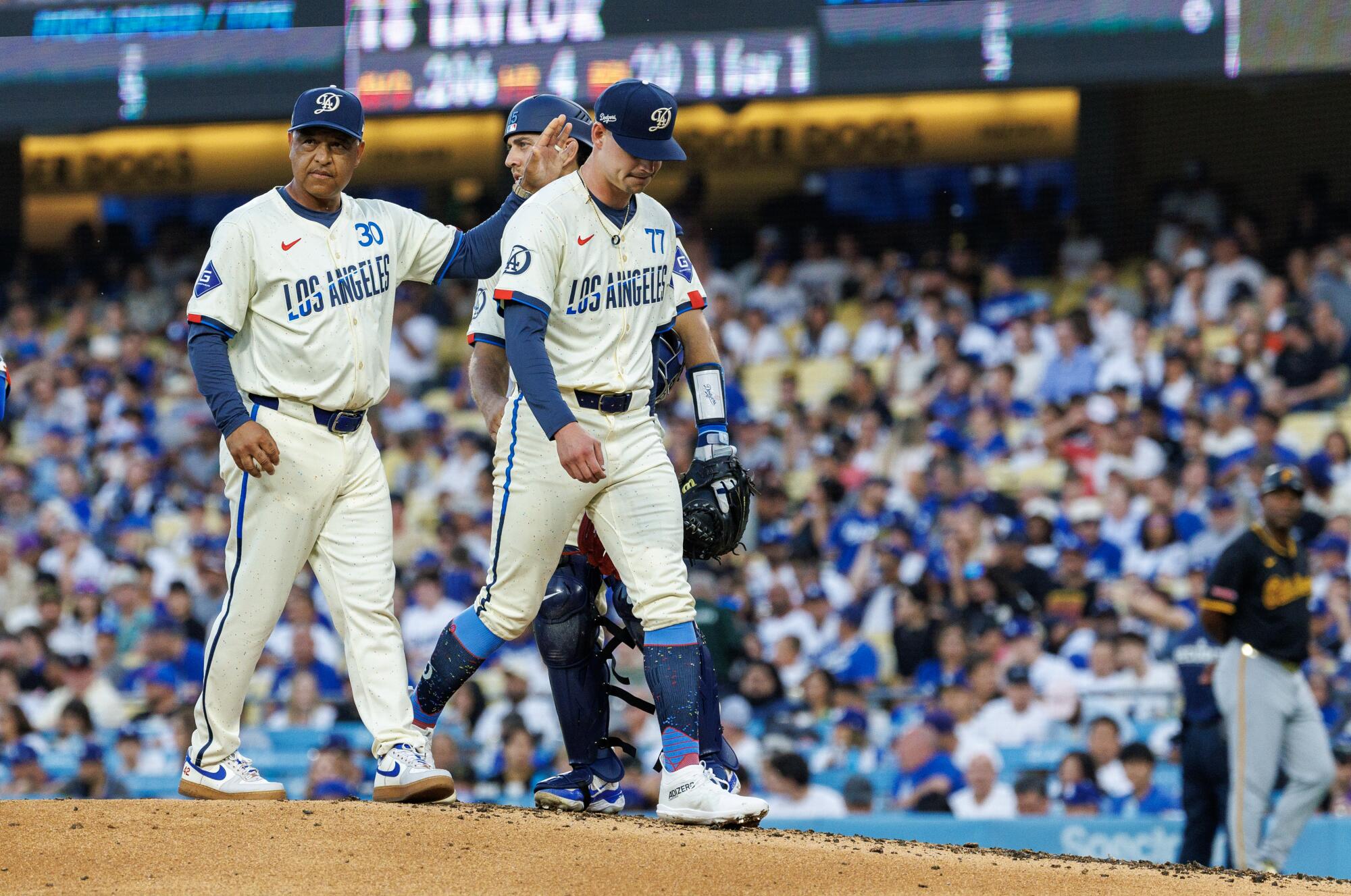
It’s why, on the whole, rises in velocity have correlated with rises in injuries.
And in recent years, few clubs have seemingly experienced that trade-off as much as the Dodgers.
The Dodgers have been ahead of the curve on baseball’s analytics age the last decade, early to utilize everything from pitch tracking machines to biomechanical analysts to help pitching prospects cultivate better stuff.
They hired minor-league coaches — including current minor league director of pitching Rob Hill — from private pitching labs such as Driveline Baseball, the Seattle-based training center that popularized weighted-ball velocity programs now prevalent around the sport.
The proof has been evident in the radar gun readings: Since 2021, the Dodgers have had the eighth-highest average pitch velocity in the majors and, more notably, the highest average pitch velocity among minor leaguers, according to Baseball Savant’s pitch-tracking database.
But, in that time, they’ve also been rocked time and again by injuries to young pitchers.
Dodgers rising pitching star River Ryan suffered a forearm injury during the fifth inning of his fourth career start Saturday at Dodger Stadium.
Buehler, Dustin May and Tony Gonsolin — each of whom at one point looked like potential future aces of the Dodgers’ pitching staff — have all missed full seasons in recent years because of Tommy John surgeries.
This season, Emmet Sheehan, Kyle Hurt and River Ryan — each of whom could have aided in the team’s October push — have also needed to get the procedure. Another top prospect, Nick Frasso, has missed the entire year after offseason shoulder surgery.
Add in other injury-stricken pitchers such as Bobby Miller and Michael Grove, and the result has been a mounting IL backlog: Starting with Buehler’s debut in 2017, the Dodgers have successfully graduated 13 starting pitching prospects to the major leagues. That group, however, has spent almost half of its collective time in the majors on the injured list.
“It’s just unfortunate,” manager Dave Roberts said last month. “Because a lot of great talent is on the IL.”
The Dodgers, of course, aren’t the only team that has had young pitchers ravaged by injuries (especially this year, when rising stars Atlanta’s Spencer Strider and Baltimore’s Kyle Bradish, among many others, have blown out).
They aren’t the only club that has placed an emphasis on velocity, or hired products of private pitching labs to lead their farm system, either.
Even at the grassroots level, pitchers are adopting such practices on their own, taking the same kind of risks Buehler once did to cross that bridge to the majors.
But, the Dodgers have nonetheless become the biggest face of baseball’s pitching injury epidemic — sitting in the eye of a storm facing the sport as a whole.
“I think it’s great we want to try to push [pitchers] bodies as much as possible, from a strength and conditioning and performance aspect,” Zaremski said, speaking generally of pitching development across both the professional and amateur landscape. “But there are repercussions with it. And there has to be a balance. Otherwise, pitchers are not going to last.”
For much of the last decade, Fleisig has been working with MLB and its teams to find ways to keep more of that young, promising pitching talent healthy.
Fleisig believes the key is in further technological biomechanical advances — where improving technology could help teams better identify which of their pitchers are over-stressing their bodies.
Once costly, complicated and cumbersome, biomechanics are now “usable at the team level,” Fleisig said, with “markerless” motion capture cameras (which don’t require any wearable sensors to be attached to players) commonplace around the league.
These high-tech units have been used by teams (as well as private pitching labs) for years to boost performance. Where adjustments used to require a pitching coach’s naked eye, biomechanical breakdowns can detail even the smallest variations in a pitcher’s delivery, and pinpoint where they can get more velocity, spin or deception from their mechanics.
Fleisig’s dream: That it can be used to flag potential injury risks, too.
“Let’s say a pitcher is analyzed, and they say he’s putting too much torque on his elbow, and it’s because he keeps dropping his arm,” Fleisig said. “So now, the team and that pitching coach needs to figure out what drills [the pitcher] can do to raise his arm. Or maybe they say he lacks shoulder strength and they need to get the strength coach working on more shoulder drills.”
The Dodgers have few rivals in baseball when it comes to developing pitchers in the minor leagues.
“The world of baseball is still trying to figure out what to do with all this information,” he added. “But I’m very optimistic that the technology is there and the teams are starting to collect information that could help individual pitchers.”
The irony: If any club could have already mastered this, the Dodgers figured to be at the top of the list.
They already use KinaTrax biometric systems in their farm system. They were described by one industry medical expert, who wasn’t authorized to speak publicly, as one of MLB’s “smart” teams when it comes to player development. Collaboration is also among their self-proclaimed organizational priorities, with members of the club’s medical and strength staffs involved in the evaluation of prospects’ mechanics.
Yet, their search for answers remains a struggle — one they’ve been reluctant to address at length publicly.
Hill, the Driveline-bred director of minor league pitching, declined comment for this story. The Dodgers declined to make medical and player performance officials available for interviews.
Major league pitching coach Mark Prior did discuss pitching injuries earlier this season, but echoed the same uncertain message of the front office.
“If we knew what the causes were,” Prior said, “we would have done something about it.”
The Dodgers have experimented with ways to better protect pitchers. They’ve taken a cautious approach with minor-league workloads, limiting innings for many of their young arms. They’ve looked for trends in different players’ physiques, careful to avoid a one-size-fits-all style of development. They’ve made an effort to give their big-league starters extra days of rest whenever possible in the regular season. And when a pitcher does suffer a serious injury, they’ll hold staff meetings to try to diagnose any root causes.
The Dodgers’ consistent development of minor leaguers to supplement their star-studded roster has made them one of baseball’s top organizations.
“I think everybody has tried every little thing,” Prior said.
Ultimately, it all circled back to the same question.
“Stuff is great, stuff is at an all-time high, and it’s really fun to watch what these guys throw,” Prior said. “But is that the reason? I don’t know.”
Medical experts believe it is. Growing injury data back that up, too. And while the problem continues to rankle the entire sport, it has once again impacted the Dodgers most directly.
The club has ushered plenty of pitchers across the major-league bridge in recent years. Keeping them healthy on the other side, however, continues to be perhaps their greatest organizational undoing.
“We need to be very thoughtful about studying this more, and understanding things more, and appreciating what we know, what we don’t know,” Friedman said. “Just reimagining everything to try to put ourselves in a better position, especially relative to the industry, going forward.”
More to Read
Sign up for This Evening's Big Stories
Catch up on the day with the 7 biggest L.A. Times stories in your inbox every weekday evening.
You may occasionally receive promotional content from the Los Angeles Times.

